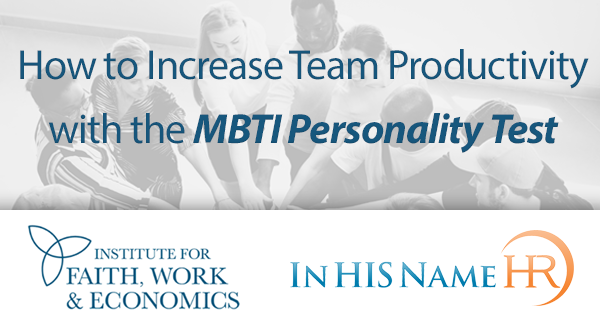
Jan 14, 2019
Personality clashes and disparate problem-solving styles are all too common, even in the most motivated organizations. Someone’s true character is often revealed in the way in which he or she acts and reacts in situations with others. The ripple effects can be devastating. They can even dam up the works altogether if you don’t take action—the right action.
Most conflicts stem from misunderstandings. By being proactive and decoding the personalities in your organization—that is, working to understand the different ways in which people see and understand the world while interacting with others, you can help your employees to work together harmoniously. When employees have a strong grasp of the personalities of their colleagues, they can leverage each other’s strengths and sharpen one another (Prov. 27:17).
Read The Full Post Here
Mark A. Griffin | Blog, Christian Higher Ed HR, Human Resources

Jan 7, 2019
Is Your Camp Struggling?
Are increased costs making it hard to become financially viable?
Is employee turnover too high?
Is finding the best talent too expensive?
Is workplace productivity a problem?
Fortune 100 companies solve all these problems effectively.
They have fully staffed human resource departments implementing specific programs that keep organizational performance high.
Not so, unfortunately, for non-profits, Churches, Ministries and Colleges, and that can cost you everything.
Resources and tools to expertly correct performance problems haven’t been readily available…until now.
We provide the expertise, strategies, and details for HR programs used by the best organizations in the world are available right now for organizations like yours
Turn your speakers on and learn more here: HR Mastery Toolkit
The Human Resources Mastery Toolkit
This is not a HR how-to booklet–
It’s rich, step-by-step training, an expert HR insider’s guide, with all the templates and details you need to transform your organization into a lean and potent powerhouse.
HR consultants will run you thousands of dollars. If you can’t afford that, this Toolkit makes learning HR leadership and implementing the best programs a reality, right away.
As your organization’s efficiency and performance improves through these first-rate techniques and programs, your cost savings will skyrocket, too!
Expect to see all of the following:
• Revitalized Purpose and Direction for your Organization
• Cost-Savings across all Departments
• Greatly Improved Employee Relations
• Improved Organization and Administration Functions
• Enhanced Communication both Internally and Externally
• More Efficient and Capable Leadership
• A Huge Savings on your Recruiting, Hiring, and Training Expenses
• Higher Employee Competency and Morale
• A Big Boost in Workplace Efficiency and Productivity
• Productive Meetings
• Improved Safety
• Lower Absenteeism
This program uses best HR practices from top organizations like The Quaker Oats Company, Merck & Company and Eastman Kodak Company! You get the best programming available!
Order Here: HR Mastery Toolkit
Special Pricing for CCCA Members through March 1, 2019
Use coupon code CCCA20 at checkout to receive 20% off!
Have questions or need an invoice?
Contact Us Here
Mark A. Griffin | Blog, Events

Jan 7, 2019
This blog series focuses on nine areas that keep employees committed to your organization. In our opinion, employees stay committed when they are Involved, Paid Well, Asked for Input, Challenged, Empowered, Trusted, Valued, Appreciated, and Mentored.
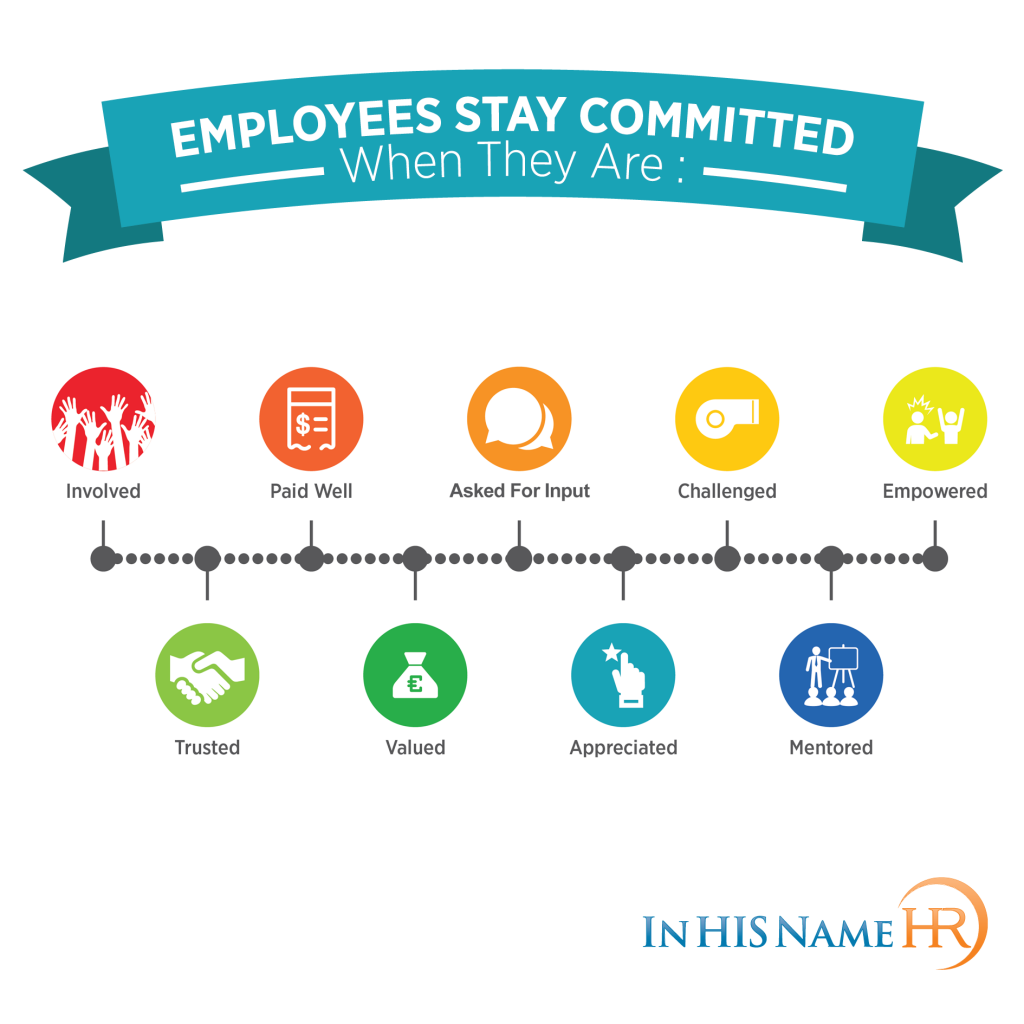
Do You Mentor Your Employees?
There are many factors that affect employee motivation and performance in the workplace. Although often overlooked, mentoring is one such factor. Mentored employees are employees who feel valued. As such, a mentorship program in your workplace is vital to employee happiness. In fact, workplace mentorship could be the catalyst you need to help your employees drive high performance.
What Is Workplace Mentoring?
Workplace mentoring is an organized learning partnership with employees. It involves sharing information, insights, knowledge, and experiences. The aim? To increase productivity and employee value.
All successful organizations have one trait in common—great leaders. But it doesn’t end there. To build a sustainable success, leaders must share their knowledge and values with employees. Mentoring is an effective way to pass on this knowledge.
Mentoring shouldn’t be restricted only to new employees. Even tenured employees often need guidance. The personalized leadership provided by a mentoring program can yield great rewards.
Why Is Workplace Mentoring Important?
Mentorship is vital to the culture of large enterprises and small organizations alike. A study conducted by the Chronus Corporationshows that mentorship programs are popular with Fortune 500 companies. In fact, about 71% of these companies offer organized mentorship programs. Another study, among Millennials, reveals that more than 79%think mentoring is crucial to attaining their career goals. But what benefits can you derive from having a mentorship program in your workplace?
Training Employees
To get the best results from your employees, there is no doubt you need to train them well. But the training doesn’t have to be through crash courses or organized seminars. Some of the most valuable knowledge we pick up as humans comes through informal settings.
A mentorship program provides the training avenue employees need. It’s through mentoring that employees gain or update the knowledge needed to perform at work.
Infusing Leadership Skills
Leadership is one of those skills that can’t always be learned effectively in a classroom. A mentoring program, however, is a great avenue through which employees can pick up invaluable skills. This can prove to be of great benefit to the organization in the long run, as a new generation of leaders is already saddled to handle the reins. Transitions can therefore be smoother and retirement gaps easier to fill.
Reducing Attrition
From a managerial perspective, reduced attrition is the most important benefit of a mentorship program. A potential for growth and development is one of the major motivational factors that ensure employees stick with an organization.
A mentorship program gives employees a necessary sense of belonging. Employees in a mentorship program believe they have a great potential for career progression, which helps them experience their work as rewarding and keeps them contentedly right where they are.
Putting a Mentorship Program in Place
So, think about this again: Do you mentor your employees? If your answer is no, or your yes carries a tinge of uncertainty, you have yet to maximize the productivity of your employees. Organize a mentorship program today. Get your HR department involved, develop a brilliant program, and watch as you achieve results you didn’t think were possible.
___________________________
In HIS Name HR helps organizations build high-performance Human Resources programs. Visit them at In HIS Name HR.
Mark A. Griffin is the founder and chief consultant of In HIS Name HR LLC. Connect with him on LinkedIn or Twitter.
Mark A. Griffin | Blog, Christian Higher Ed HR, Human Resources
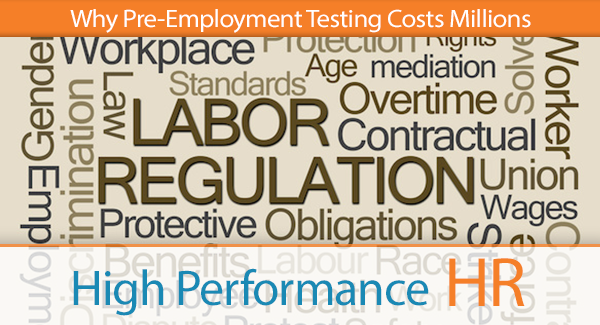
Jan 7, 2019
Is your organization unknowingly violating federal and state employment laws? If so, you’re not alone. Many unsuspecting professionals in both profit and nonprofit organizations manage via flawed human resource practices.
Why is being compliant with Equal Employment Opportunity Commission (EEOC) laws through proper HR practices important? Read the following cases to understand how organizations that thought they were doing things right discovered the hard way that they were not.
Large Company Cases
Target to pay $2.8M to upper-level applicants in EEOC settlement
Tests for upper-level jobs screened out blacks, Asians and women, EEOC says.
Target Corp. has agreed to pay $2.8 million to thousands of rejected job candidates for upper-level positions because tests they were given disproportionately screened out applicants based on their race or gender.
The payout was announced Monday by the Minneapolis Area Office of the U.S. Equal Employment Opportunity Commission (EEOC) and will be disbursed among more than 3,000 people, said Julie Schmid, acting director for the agency in Minneapolis. Source
BMW to Pay $1.6 Million and Offer Jobs to Settle Federal Race Discrimination Lawsuit
GREENVILLE, S.C. – The U.S. District Court for the District of South Carolina today entered a consent decree ordering BMW Manufacturing Co., LLC (BMW) to pay $1.6 million and provide job opportunities to alleged victims of race discrimination as part of the resolution of a lawsuit filed by the U.S. Equal Employment Opportunity Commission (EEOC). The lawsuit, filed by EEOC’s Charlotte District Office, alleged that BMW excluded African-American logistics workers from employment at a disproportionate rate when the company’s new logistics contractor applied BMW’s criminal conviction records guidelines to incumbent logistics employees. Source
United Airlines to Pay over $1 Million To Settle Disability Lawsuit
Supreme Court Lets Stand 7th Circuit Ruling That Reassignment Is Reasonable Accommodation
In a case that garnered nationwide attention, air transportation giant United Airlines Inc. has agreed to pay more than $1 million and implement changes to settle a federal disability lawsuit filed by the U.S. Equal Employment Opportunity Commission (EEOC).
The EEOC’s lawsuit charged that United’s competitive transfer policy violated the Americans with Disabilities Act (ADA). The law requires an employer to provide reasonable accommodation to an employee or job applicant with a disability, unless doing so would impose an undue hardship for the employer. By requiring workers with disabilities to compete for vacant positions for which they were qualified and which they needed in order to continue working, the company’s practice frequently prevented employees with disabilities from continuing employment with United, the EEOC said. Source
Small to Medium Sized Company Cases
Stack Bros. to Pay $140,000 to Settle EEOC Age Discrimination and Retaliation Suit
Employees Were Fired at Superior, Wis., Firm for Turning 62, Federal Agency Charged
MADISON, Wis. – Stack Bros. Mechanical Contractors, Inc. of Superior, Wis., a major heating and plumbing contractor in northern Wisconsin and northern Minnesota, will pay $140,000 and furnish other relief to settle an age discrimination and retaliation lawsuit brought by the U.S. Equal Employment Opportunity Commission (EEOC), the agency announced today.
According to EEOC’s suit, Stack Bros. discriminated against Randy Virta and Karen Kolodzeske by firing them when they turned 62 in 2014. Stack Bros. also retaliated against Kolodzeske for resisting its plans to fire her, EEOC alleged.
According to Julianne Bowman, director of the EEOC’s Chicago District, which includes Wisconsin, the agency’s pre-lawsuit investigation revealed that both Virta and Kolodzeske repeatedly warned Stack Bros.’ owner that his plan to fire them when they turned 62 was illegal. However, the owner refused to relent, and, after firing Virta, retaliated against Kolodzeske for her complaints by denying her a raise, suspending her without pay for two days and creating a hostile work environment while waiting for her to turn 62. Virta and Kolodzeske had worked for Stack Bros. for 16 and 25 years, respectively. Source
Texas Oil Field Services Company Pays $30,000 to Settle EEOC Retaliation Suit
Only Female Roustabout Fired for Reporting Sexual Harassment, Agency Charged
DALLAS – An Iraan, Texas oil field construction and services company will pay $30,000 and furnish other relief to settle a retaliation lawsuit brought by the U.S. Equal Employment Opportunity Commission (EEOC), the federal agency announced today.
The EEOC’s suit, filed in U.S. District Court for the Western District of Texas, Pecos Division (4:14-CV-00073-DAE), charged that Garrison Contractors, Inc. fired its only female roustabout, Elma Garza, after she reported being sexually harassed on the job.
Hired by the company in January 2012 as a dump truck driver, Garza spent most of her employment as the company’s only female oil field worker. In this roustabout position, Garza worked side by side with her male co-workers fixing oil and gas leaks, digging ditches and cleaning heavy equipment. EEOC said that during her employment, Garza was subjected to lewd comments about female organs and sex. EEOC contends that when Garza reported the unwanted conduct, the company retaliated against her by terminating her.
Retaliation for reporting sexual harassment violates Title VII of the Civil Rights Act of 1964. The EEOC filed suit after first attempting to reach a pre-litigation settlement through its conciliation process. Source
EEOC Sues Seymour Midwest for Age Discrimination
Agency Alleges Company Rejected an Applicant Older than Its Ideal Age
INDIANAPOLIS — Seymour Midwest, a Warsaw, Indiana, hand tool manufacturing company, violated federal law when it rejected a 58-year-old executive upon learning that he was older than the company’s ideal age range of 45-52, the U.S. Equal Employment Opportunity Commission (EEOC) charged in a lawsuit it filed today.
According to EEOC’s suit, Seymour Midwest selected Steve Maril, from a pool of applicants for its senior vice president of sales position, to participate in an initial, email-based interview. In addition to questions about Maril’s experience and willingness to relocate, the company asked whether Maril was within its ideal age range of 45-52. When Seymour Midwest learned that Maril was older than its ideal age range, the company refused to hire him. Source
Church and Nonprofit Cases
EEOC Sues United Bible Fellowship Ministries for Pregnancy Discrimination
Organization’s Policy Requiring Pregnant Employees to Resign Is Discriminatory, Federal Agency Charges
HOUSTON – United Bible Fellowship Ministries, Inc., an organization that provides faith-based, community social services, violated federal law when it forced female employees out of their jobs because of their pregnancies, the U.S. Equal Employment Opportunity Commission (EEOC) charged in a lawsuit announced today.
According to the EEOC’s suit, Shamira Johnson worked as a resource technician, providing home care assistance to disabled individuals. Her duties included housecleaning, light laundering, administering medication, cooking and assisting with personal hygiene and grooming. United Bible terminated Johnson and other pregnant employees according to its “Pregnancy in the Workplace Policy” which required pregnant women in direct client-care positions to stop working during their pregnancy and reapply for a vacant job once they were no longer pregnant. Johnson did not return to work at United Bible after her pregnancy. The policy also unlawfully required applicants to disclose their pregnancy when applying for employment. Source
Inconsistencies in Termination Decision Wipe out Employer’s Victory
The U.S. Court of Appeals for the Seventh Circuit recently erased the victory of the Good Samaritan Ministries in an employee termination case, Ledbetter v. Good Samaritan Ministries, et al., — F.3d —- (7th Cir. Feb. 6, 2015), sending the case back to the trial court for further litigation.
The employee, Linzie Ledbetter (male), worked in a homeless shelter and food pantry. After a shelter resident complained about Ledbetter’s alleged threat to evict her, Ledbetter’s supervisors met with him and warned him that such behavior could result in disciplinary action, including termination. As a result, Ledbetter filed an EEOC charge—and later, a federal lawsuit—claiming race discrimination and retaliation under Title VII of the Civil Rights Act of 1964.
Shortly thereafter, Ledbetter filed a second EEOC charge for race discrimination and was subsequently warned again about his behavior toward the shelter residents and toward his co-workers. The day after his supervisors learned of the second EEOC charge, they fired Ledbetter, prompting a third EEOC charge and another lawsuit for retaliation.
In the trial court, Good Samaritan Ministries and its supervisors argued that Ledbetter’s termination was not prompted by the second EEOC charge, because they had decided to fire him five days before they even knew of the charge. The trial court agreed with their argument and granted summary judgment in their favor. Source
King’s Way Baptist Church Sued By EEOC for Retaliation
Kindergarten Teacher at Church’s Christian School Fired for Complaining About Sexual Harassment by Pastor, Federal Agency Charges
ATLANTA – The King’s Way Baptist Church, Inc. of Douglasville, Ga., violated federal law when it fired a kindergarten teacher at its King’s Way Christian School for reporting sexual harassment by its chief executive officer / pastor, the U.S. Equal Employment Opportunity Commission (EEOC) charged in a lawsuit it filed recently.
According to the EEOC’s complaint, the pastor repeatedly subjected the teacher to sexual harassment by touching her inappropriately and made veiled threats to her if she should complain. When the teacher complained about the harassment, rather than taking measures to prevent any further harassment, King’s Way fired her.
These actions violate Title VII of the Civil Rights Act of 1964, which prohibits employers from firing, demoting, harassing or otherwise retaliating against employees because they complained to their employer about discrimination on the job. EEOC filed suit (EEOC v. The King’s Way Baptist Church, Inc., Civil Action No. 1:15-cv-03816) in U.S. District Court for the Northern District of Georgia, Atlanta Division after first attempting to reach a pre-litigation settlement through its conciliation process. EEOC is seeking back pay and compensatory and punitive damages for the former teacher, as well as injunctive relief designed to prevent future discrimination. Source
Miscellaneous Cases Of Interest
Employers Beware: EEOC Stepping Up Disability Discrimination Enforcement
On the heels of that news, 10 of the 22 lawsuits filed or settlements reached by the EEOC in May included allegations of disability discrimination. That’s a .455 batting average for the ADA, which is none too shabby in anyone’s book. Some of the issues addressed by the EEOC in the past month include:
A $72,500 settlement with an Akron, Ohio, medical transportation services company, which fired an EMT-paramedic with multiple sclerosis instead of providing additional leave as a reasonable accommodation.
A $110,000 settlement with Norfolk Southern Railway Company, which medically disqualified a track maintenance worker because of degenerative disc disease without doing an individualized assessment of whether he could perform the essential functions of his job.
A $90,000 settlement with a Tennessee nursing home facility, which terminated an HIV-positive nurse.
An $18,000 settlement with an Alabama athletic apparel retailer, which fired a legally blind sales clerk (who lost his full use of his sight while serving in the Army) without any consideration of whether an accommodation, such as a magnifying glass or a new computer monitor, might be reasonable. Source
_________________________________
At In HIS Name HR LLC our primary role is to assist the client to identify needs, develop an action plan and facilitate change to enhance the success of your organization. Our management, human resource, and training services are designed to improve quality, safety, productivity, efficiency, and communication while improving employee morale.
With our vast experiences spanning many industries we will create the HR programs that will drive excellence. Contact us today. You will be glad you did.
Don’t be left unprepared. Contact us today. You will be glad you did.

Mark A. Griffin | Blog, Human Resources

Dec 21, 2018
This blog series focuses on nine areas that keep employees committed to your organization. In our opinion, employees stay committed when they are Involved, Paid Well, Asked for Input, Challenged, Empowered, Trusted, Valued, Appreciated, and Mentored.

Employees Stay Committed When They Are Appreciated
The best way to create a healthy workplace environment is through communication and appreciation. As leaders of the management team, it’s vital you work out strategies to show your employees that you both value their work and appreciate their contributions to the team. With good employee communication and understanding, your organization can achieve high performance.
One initial step to great leadership is realizing that employees don’t just desire a paycheck—they need recognition and encouragement. In fact, a recent Harvard Business Review article stated that “people are more likely to jump ship when they have a horrible boss.” So, it is just not pay dissatisfaction that makes employees leave; typically it is poor leadership.
It’s easy to say “Thank you,” or “Good job,” and just be done with it, but there are countless meaningful ways to show support and respect for your employees while encouraging better performance.
Many of us being Christian leaders in the workplace, it’s also important to ensure we help people to understand their contribution to the greater good. There’s never been a better time to demonstrate inspired leadership and show your team members what a difference they make. We need to be a light in a dark world. I recently spoke to an employee at an organization who has never been to church. His only exposure to Christ was through Christians in the workplace. That is a hefty responsibility for us.
One issue that many leaders have, however, is a lack of understanding in terms of how to communicate with employees. Often, we take for granted our employees’ performance, which can lead to resentment and not feeling valued in the organization.
The following is a list of several ways that we, as leaders, can take the initiative to show our employees that they’re appreciated while keeping them on task:
Install a Rewards System
Employee recognition often holds more value if it’s peer-inspired, and putting employees in charge of honoring each other’s best efforts can be an ingenious way to inspire confidence.
By allowing employees to tout each other’s best efforts and choose their own reward plan, you build a culture of praise and ownership. But remember: The best ideas come from employees. Instead of you dictating what their rewards should be, put together a team to solicit ideas.
Spend Time Connecting
Absent leaders who don’t take the time to connect with their employees rarely see the best results. Your employees are hardworking contributors to the success of your business, and spending time connecting with them is vital.
From generating their best ideas to feeling a genuine desire to please you, making connections with your employees goes a long way toward forging a strong mutual relationship that will do wonders for you andthem.
Educate
Whether it’s having an instructor in or providing mobile learning, letting your employees engage in learning to develop their already strong skills demonstrates a great deal of faith in their abilities. When an organization, and a leader, invests in employees, it shows an appreciation for the value they have to offer, as well as faith in their expertise.
Nothing is more motivating for an employee than feeling as though their contribution is appreciated enough to nurture.
Get Feedback
Nothing says respect like asking for feedback. And while it can be difficult for employees to feel comfortable telling you what they really think, there are different methods to open the channel of communication.
From an online survey to developing an old-fashioned, Christian, open-communication bond, there are several ways to communicate how important your employee’s feedback is, both to you and the future of the organization. After all, nobody grows an organization alone—we require employee feedback.
Implement a system that encourages feedback, such as one that consists of a set of questions regarding their likes and dislikes in the workplace and on the leadership in the organization, and provide open fields to allow for free expression. Consider using a 360-LeadershipAssessment to help develop your leaders.
When employees feel heard and free to contribute, they’re far more likely to take ownership.
Reward Their Passions
One of the best ideas for incentives I’ve ever heard is setting aside time as a way to reward your employees. Giving your team the gift of time off for doing a bang-up job can be incredibly motivating. Encouraging them to take that time and indulge one of their passions is even better.
Whether it’s volunteering time at a local charity, ministry, spending time with their children or taking some time to partake in physical exercise, there are lots of nurturing and inspiring ways to reward your employees with time.
As leaders, it’s up to us to create the bonds we want to enjoy with our employees and the culture we’d like to implement on the job. Appreciation and healthy communication are vital to this dynamic, and there are many ways we can go about nurturing an inspiring work environment. Have you enjoyed particular success rewarding and motivating employees? Or do you have other inspiring ideas to share? If so, let us know.
____________________
In His Name HR helps organizations build high-performance Human Resources programs. Visit them at In HIS Name HR.
Mark A. Griffin is the founder and chief consultant of In His Name HR LLC. Connect with him on LinkedIn or Twitter.
Mark A. Griffin | Blog, Christian Higher Ed HR, Human Resources
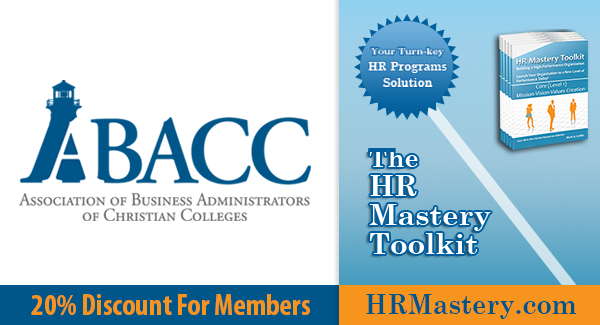
Dec 15, 2018
Is Your College Struggling?
Are increased costs making it hard to become financially viable?
Is employee turnover too high?
Is finding the best talent too expensive?
Is workplace productivity a problem?
Fortune 100 companies solve all these problems effectively.
They have fully staffed human resource departments implementing specific programs that keep organizational performance high.
Not so, unfortunately, for non-profits, Churches, Ministries and Colleges, and that can cost you everything.
Resources and tools to expertly correct performance problems haven’t been readily available…until now.
We provide the expertise, strategies, and details for HR programs used by the best organizations in the world are available right now for organizations like yours
Turn your speakers on and learn more here: HR Mastery Toolkit
The Human Resources Mastery Toolkit
This is not a HR how-to booklet–
It’s rich, step-by-step training, an expert HR insider’s guide, with all the templates and details you need to transform your organization into a lean and potent powerhouse.
HR consultants will run you thousands of dollars. If you can’t afford that, this Toolkit makes learning HR leadership and implementing the best programs a reality, right away.
As your organization’s efficiency and performance improves through these first-rate techniques and programs, your cost savings will skyrocket, too!
Expect to see all of the following:
• Revitalized Purpose and Direction for your Organization
• Cost-Savings across all Departments
• Greatly Improved Employee Relations
• Improved Organization and Administration Functions
• Enhanced Communication both Internally and Externally
• More Efficient and Capable Leadership
• A Huge Savings on your Recruiting, Hiring, and Training Expenses
• Higher Employee Competency and Morale
• A Big Boost in Workplace Efficiency and Productivity
• Productive Meetings
• Improved Safety
• Lower Absenteeism
This program uses best HR practices from top organizations like The Quaker Oats Company, Merck & Company and Eastman Kodak Company! You get the best programming available!
Order Here: HR Mastery Toolkit
Special Pricing for ABACC Members through March 1, 2019
Use coupon code ABACC20 at checkout to receive 20% off!
Have questions or need an invoice?
Contact Us Here
Mark A. Griffin | Blog, Human Resources, Special Topic

Dec 14, 2018
This blog series focuses on nine areas that keep employees committed to your organization. In our opinion, employees stay committed when they are Involved, Paid Well, Asked for Input, Challenged, Empowered, Trusted, Valued, Appreciated, and Mentored.
 Do Your Employees Feel Valued?
Do Your Employees Feel Valued?
Every organization that hopes to achieve its goals and objectives needs employees to commit to the task. As employers, it falls to us to keep our employees motivated. As any employer knows, unmotivated employees contribute less to reaching organizational goals.
Motivated team members are the hallmark of a progressive organization. In fact, they often go above and beyond for their organization.
What makes them so motivated? It’s simple—they feel valued.
Organizations that go out of their way to make their employees feel valued often reap great rewards. As a manager, one of the most important things you can do is to show your team their value.
And while it’s important from a productivity point of view, that’s not the only reason. From a Christian perspective, we all deserve to feel valued. To know that our contribution makes a difference.
To understand that our work is for the greater good.
How to Make Employees Feel Valued
There are several ways to contribute to an employee’s sense of value. For example, making it clear that every role has a direct impact on the good of the organization.
As a manager, it’s vital never to trivialize any of your employee roles. Employees must understand that their efforts help to cut a clear path to success for the organization. There are a variety of ways to cultivate a high sense of value among the workers in your organization, including:
Communication: Open the channels of communication between employees and leadership. It’s important to listen to employee opinions and follow suggestions where appropriate.
Making changes based on employee feedback sends a clear signal of value and appreciation.
Communication should always be professional, but never stiff or distant.
A leader should always be willing to facilitate smooth communication with employees. Open and natural communication with the leadership team makes employees feel valued.
Showing Appreciation: The best way to motivate employees to do more is to show appreciation for tasks already done. On a personal level, a “Thank you for a job well done” can lift employee morale faster and higher than just about anything else.
Many organizations send appreciation emails to employees after a significant win. Events dedicated to rewarding employees are also great on a yearly or even monthly basis. This type of reward system spurs employees to do more. But the organization must be consistent and transparent in its dealings to ensure sustainability.
Encouraging Work–Life Balance: As a manager, it’s important to appreciate and respect that employees have a life outside of work. Placing heavy value on work at the expense of employee personal lives is counterproductive. Work schedules should be flexible, even if only to a small extent. Managers should not be quick to say no when employees request time off to attend personal events.
A recent article in Accounting Today stated, “A new global survey via professional services network World Services Group found that among young professionals in North America (as well as the rest of the world), work–life balance was the biggest priority in their professional lives, beating out wealth and leadership opportunities.”
For any organization to produce results, you need the full commitment of all employees. Leadership should never simply expect employees to have the desire to move the organization forward.
The reason behind this is clear. Employees often have a lesser stake in the organization. Yet, as a manager, if you’re able to make your employees feel valued, there is no limit to what can be achieved.
__________________________
In HIS Name HR helps organizations build high-performance Human Resources programs. Visit them at In HIS Name HR .
Mark A. Griffin is the founder and chief consultant of In HIS Name HR LLC. Connect with him on LinkedIn or Twitter.
Mark A. Griffin | Blog, Christian Higher Ed HR, Human Resources

Dec 7, 2018
This blog series focuses on nine areas that keep employees committed to your organization. In our opinion, employees stay committed when they are Involved, Paid Well, Asked for Input, Challenged, Empowered, Trusted, Valued, Appreciated, and Mentored.
How to Show Employees You Trust Them
In order for any organization to achieve high performance in these difficult times, it’s important that your employees be committed to your organization and your organization’s success. In order to gain the commitment of your employees, leaders or managers need to include employees in some of the organization’s decision making and show they trust the employee to do what’s in the organization’s best interest.
The human resources department may be able to give you tips on some ways to engage your employees and build trust. In the meantime, here are some ways to help you build employee trust and commitment.
Show Your Employees You Value Their Input
One of the most important ways to secure your employees’ engagement and commitment is to show you value their input and contribution to making your organization a success. Everyone wants to feel valued and showing each employee that you appreciate their contribution earns their trust and makes them more committed to you and the organization.
In order to garner input, you must have a foundation of trust. Trust is an “evolving thing that ebbs and flows,” says David DeSteno, a psychology professor at Northeastern University and author of The Truth About Trust. If you don’t have trust, more than likely you won’t get honest and in-depth input from employees. In fact, we often find that when trust is lacking, it’s rarely worth the time and effort required to survey or interview employees for ideas—they just don’t have the energy, or care to contribute earnestly.
Goal Setting
In order for any organization to move ahead, they need to set goals. Use goal setting to build trust by first setting your top-level goals and then allowing your employees to set their own short-term goals and objectives to reach yours. You may be surprised to discover that, given the opportunity, your employees will set higher short-term goals and clearer objectives than your HR department likely would.
You can then use the annual review process to assess achieving the overall organizational goals and how well your employees have stepped up to do so.
Let Your Employees Define Their Job Description
Another thing your HR department or supervisor can do is to let your employees define their own job description. By encouraging your new employees to research the best practices in their area of responsibility and examine what experts in their field think their job should entail before writing out that job description, not only will that job description be far more detailed but they will include much more in the job description than your own HR department would.
When you give your employees the responsibility of defining their own roles in your organization, they will be far more willing to shoulder added responsibility than they otherwise would.
Problem Solving
One of the best ways to show your employees that you trust them, and to solidify their commitment to you, is by involving them in problem solving. Whether you are trying to bring a project in under budget, cut expenditures to make more profit, or deal with other organizational issues, sharing critical or even confidential information and allowing your employees to solve the problem will definitely solidify their engagement with your organization and strengthen their commitment to the organization and its welfare.
These are just four ways in which you can demonstrate that you trust your employees. What has been your experience? How do you managerially or corporately develop and demonstrate trust with your people? Leave comments below. We value your contribution.
______
In His Name HR helps organizations build high-performance Human Resources programs. Visit them at In HIS Name HR.
Mark A. Griffin is the founder and chief consultant of In His Name HR LLC. Connect with him on LinkedIn or Twitter.
___________
In His Name HR helps organizations build high-performance Human Resource programs. Visit them at In HIS Name HR or e-mail them.
Mark A. Griffin is the founder and chief consultant of In His Name HR LLC. Connect with him on LinkedIn or Twitter.

Mark A. Griffin | Blog, Christian Higher Ed HR, Human Resources

Nov 29, 2018
This blog series focuses on nine areas that keep employees committed to your organization. In our opinion, employees stay committed when they are Involved, Paid Well, Asked for Input, Challenged, Empowered, Trusted, Valued, Appreciated, and Mentored.
Are Your Employees Truly Empowered?
An organization’s most powerful asset is its workforce, and many leaders lose sight of that. While the metrics may center on the finances, enrollment numbers, on-time delivery, user statistics and customer feedback, ultimately it’s the frontline employees who are giving their all to keep the organization strong. Our experience is that no matter the product or services offered, many organizations miss the mark when it comes to how to empower employees.
To that end, being sure to empower your employees will go a long way toward both increasing productivity and lowering attrition rates, not to mention ensuring strong interaction between employees and the people you serve.
From a Christian perspective, it behooves us to empower everyone we can, and doing God’s work is just as vital at work as it is at church, at home, and everywhere we interact with others.
From a leadership perspective, we trust our employees to represent the organization in the best possible way—but this can be faulty logic if employees do not feel as though their contribution is vital to the health of the organization.
Failing to make employees feel needed and empowered can lead to resentment, poor performance and high staff turnover. It can wield a real impact on the success of your organization in several ways.
For example, a 2017 Gallup poll showed 85% of employees are not engaged or actively disengaged at work. —disengaged workers have been found to cause corporate losses of between $450 and $500 billion per year.
Recent studies have also shown that promoting employee happiness leads to an increase in engagement, which ultimately encourages employees to take ownership in the success of the organization.
How can you empower your employees? Here’s our list of ways to ensure they feel empowered:
Define a clear path to success
True leadership means promoting a clear vision of organizational success and enabling your team to take ownership in order to reach that success.
By helping to define the organization’s vision, along with defining the roles people need to fill in order to contribute to the overall success of the organization, you succeed in giving your staff the clarity they need to move the business ahead.
Trust is vital
One of the most critical steps you can take to help your employees feel empowered is to demonstrate that you trust their expertise and have faith in their decisions.
By allowing your employees to use their knowledge to brainstorm and implement viable processes and solutions, you demonstrate your belief that their contribution is directly responsible for the success of your venture.
While many organizations take the attitude that developing process is something only management can do, your frontline staff can almost always provide you valuable input, so treat their knowledge as an asset.
Communicate
By communicating clearly and ensuring that employees always know exactly where they stand, you open the door for a balanced, happy workforce.
From day-to-day expectations to organizational-wide policies, and everything in between, making sure that your communication is both heard and understood leaves little room for misunderstanding, and helps employees to feel as though they are important enough to be in the know.
Engage
No matter how much work you put into making your employees feel empowered, little will come of it if you stride by the proverbial water cooler each day and don’t bother to interact.
Team building is a vital component in engaged, cohesive teams, and that means not only helping your staff engage with each other but participating in the interaction. Great leadership starts with a true understanding of the organization from the ground level up. Taking the time to connect with employees is a vital means to achieve that.
Offer opportunities to learn
Knowledge is empowerment, and by allowing your employees the chance to engage in self-directed learning, you offer true empowerment that can last a lifetime.
Whether through self-directed learning or by establishing other means such as an organization-wide education platform, allowing your employees the opportunity to learn about job-related subjects not only improves work performance but allows them to feel stronger in their area of expertise. Consider building learning into your annual review process. Have a section where employees can identify their strengths and build on those. Oftentimes, review systems zero in on the negative. In contrast, our process focuses on the positives while mitigating and eliminating the deficiencies, or what some call negatives. Learn more about how we partner with organizations here.
Offering learning opportunities also illustrates to your staff that you view their expertise as a worthwhile investment, which creates a lasting bond with the organization.
Overall, empowering employees helps plant the seeds for long-term organizational growth and success, while building strong, highly engaged teams. Offering your staff this type of support will go a long way toward helping them feel invested in the success of the organization while ensuring healthy customer and client relations.
From improved productivity to employee engagement, empowerment of this kind is an investment in your greatest asset—your workforce.
It’s also always the right thing to do, as both a leader and a Christian.
______
In His Name HR helps organizations build high-performance Human Resources programs. Visit them at In HIS Name HR.
Mark A. Griffin is the founder and chief consultant of In His Name HR LLC. Connect with him on LinkedIn or Twitter.

Mark A. Griffin | Blog, Christian Higher Ed HR, Human Resources
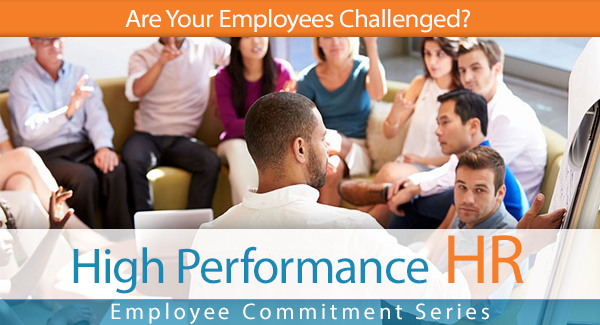
Nov 23, 2018
This blog series focuses on nine areas that keep employees committed to your organization. In our opinion, employees stay committed when they are Involved, Paid Well, Asked for Input, Challenged, Empowered, Trusted, Valued, Appreciated, and Mentored.
Are Your Employees Challenged?
Wondering how to best challenge your employees? It’s likely easier than you think. One of the first critical steps is to have your employees think through how they might serve the organization by supporting its mission, vision and values. If you want your team to fulfill your organization’s mission, reach your vision, and operate within your values, you must build these three critical proclamations into all you do from a human resources perspective.
Employees perform their best when they feel part of the team and are challenged in their job. One of the best ways to challenge your employees is get them to think about your organization’s mission, vision and values, and it is the role of your organization’s human resource department to see that these three principles are built into all that your organization does.
Mission Statement
When your organization forms its mission statement, consider what makes your organization unique and build your mission statement with that uniqueness in mind. Your organization’s mission statement should be worded in broad terms that encompass a principle that employees can get behind, encouraging them to strive to achieve this mission.
Most employees want to give their employers what they think the employer wants, so the broader your mission statement is, the more your employees will challenge themselves to interpret the mission, often going above and beyond the employer’s expectations.
For example: the mission statement of Hyatt Hotels is “To provide authentic hospitality by making a difference in the lives of the people we touch every day.”
The broadness of this mission statements leaves the interpretation open and encourages employees to strive to “make a difference” in the lives of hotel customers by providing them with excellent customer service within their defined jobs. While employees who greet and register guests of the hotel may see their role as one that includes learning guests’ names and greeting them by name, they may also feel their responsibility extends to arranging transportation for guests when needed, suggesting fine dining or kid-friendly dining establishments, or providing directions to nearby scenic places guests might like to visit. Housekeeping staff may see their mission as not only ensuring that guests rooms are cleaned and well stocked but going the extra mile to check back and see if guests need anything additional, like more towels or an extra pillow to ensure a guest’s comfort, thus going that extra step to ensure a guest’s stay is more comfortable or enjoyable.
The HR department should introduce the organization’s mission during the interview process and continue to establish that mission with every interaction with an employee. This creates an environment where each employee may take different steps to accomplish the mission, but those steps can and should lead employees to work as a teamto fulfill the overall mission.
Vision
While the mission statement should be broad, the vision statement should narrow down the mission into something measurable. Some organizations have a single vision statement that can change over time; other organizations may have several sub-visions. For example: One of the sub-visions of Hyatt Hotels is to ensure that every guest has a clean and comfortable room. A clean room is something that can be measured and supports the overall mission of the organization.
Values
Your organization’s values spell out, in at least general terms, how you expect your employees to behave toward one another, the organization’s managers, and the people the organization serves. Challenging an employee to stick to the organization’s values is what creates a time with everyone working toward a common goal.
When the human resources department prioritizes the mission, vision, and values in every interaction with employees, they create an atmosphere where the employees willingly challenge themselves to reach the organization‘s goals.
______
In HIS Name HR helps organizations build high-performance Human Resources programs. Visit them at In HIS Name HR.
Mark A. Griffin is the founder and chief consultant of In HIS Name HR LLC. Connect with him on LinkedIn or Twitter.

Mark A. Griffin | Blog, Christian Higher Ed HR, Human Resources












